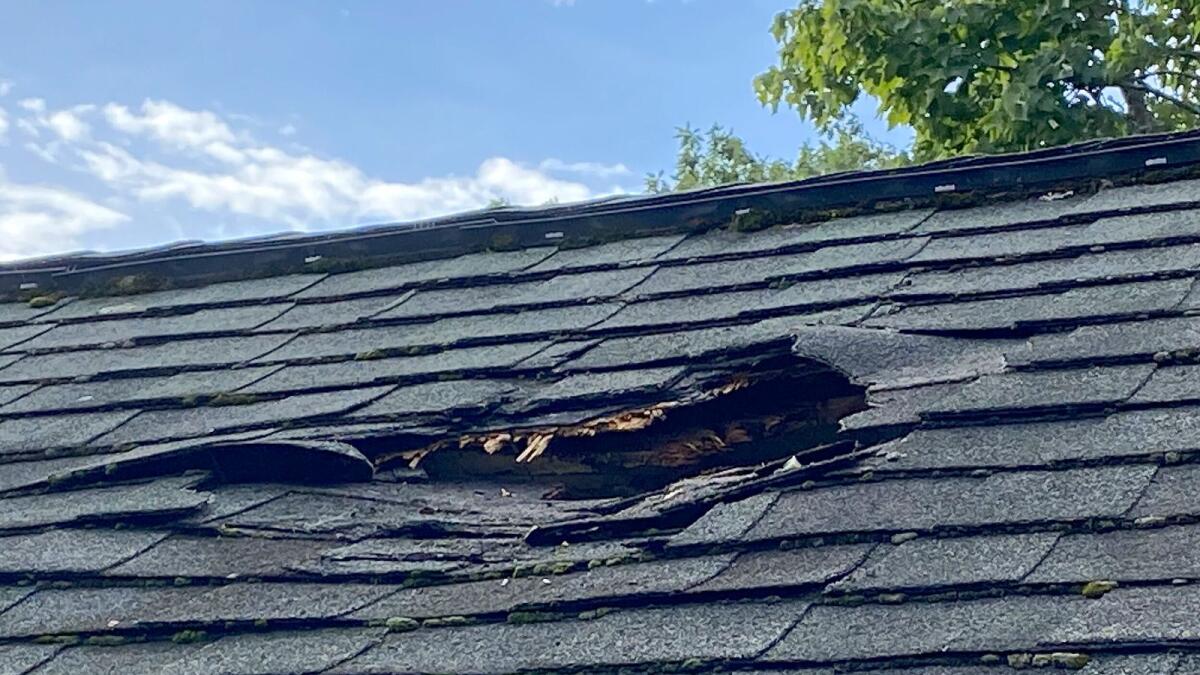
Roof damage can be a significant concern for homeowners, potentially leading to costly repairs if not addressed promptly
. Understanding the signs of roof damage and the steps to take for repair is essential for maintaining the integrity and safety of your home. This article will guide you through identifying roof damage, understanding its causes, and navigating the repair process.
Identifying Roof Damage
Visual Inspection
One of the first steps in identifying roof damage is conducting a visual inspection. Look for missing, cracked, or damaged shingles, which can be indicative of wear and tear or storm damage. Additionally, inspect for any sagging areas, as this could signal structural issues that require immediate attention.
Water Damage
Signs of water damage inside your home, such as stains on ceilings or walls, peeling paint, or mold growth, can also indicate roof damage. These symptoms suggest that water is infiltrating your home, potentially through a compromised roof.
Gutter and Downspout Inspection
Inspecting your gutters and downspouts is also crucial. Clogged or damaged gutters can prevent proper water drainage, leading to water accumulation and potential damage to your roof and home’s foundation.
Causes of Roof Damage
Weather Conditions
Severe weather conditions, including hail, heavy rains, and high winds, are common causes of roof damage. These elements can dislodge or damage shingles, leading to leaks and other structural issues.
Age and Wear
Over time, roofs naturally deteriorate due to exposure to the elements. Older roofs are more susceptible to damage and may require more frequent inspections and maintenance.
Improper Installation
Roofs that are improperly installed can be more prone to damage. Ensuring that your roof is installed by a reputable and experienced contractor is crucial for its longevity and performance.
Navigating Roof Repair
Professional Assessment
If you suspect your roof has been damaged, the first step is to contact a professional roofing contractor for an assessment. A thorough inspection by a professional can help determine the extent of the damage and the necessary repairs.
Insurance Claims
If your roof damage is the result of a covered event, such as a storm, you may be eligible for an insurance claim. Contact your insurance company to report the damage and inquire about your coverage. It’s important to document the damage with photos and keep records of any repair estimates and communications with your insurance company.
Repair vs. Replacement
Depending on the extent of the damage, your roof may require repairs or a complete replacement. Minor damage may be addressed with repairs, while significant or widespread damage might necessitate a roof replacement. A professional roofing contractor can advise you on the most appropriate course of action.
Choosing a Contractor
Selecting a reputable and experienced roofing contractor is crucial for ensuring quality repairs or replacement. Look for contractors with positive reviews, proper licensing, and insurance. It’s also beneficial to obtain multiple quotes to compare services and prices.
Conclusion
Roof damage can pose a significant risk to the safety and integrity of your home. By recognizing the signs of damage, understanding its causes, and taking appropriate action, you can ensure that your roof remains in good condition, protecting your home for years to come. Remember, prompt attention to roof damage can prevent more extensive and costly repairs in the future.